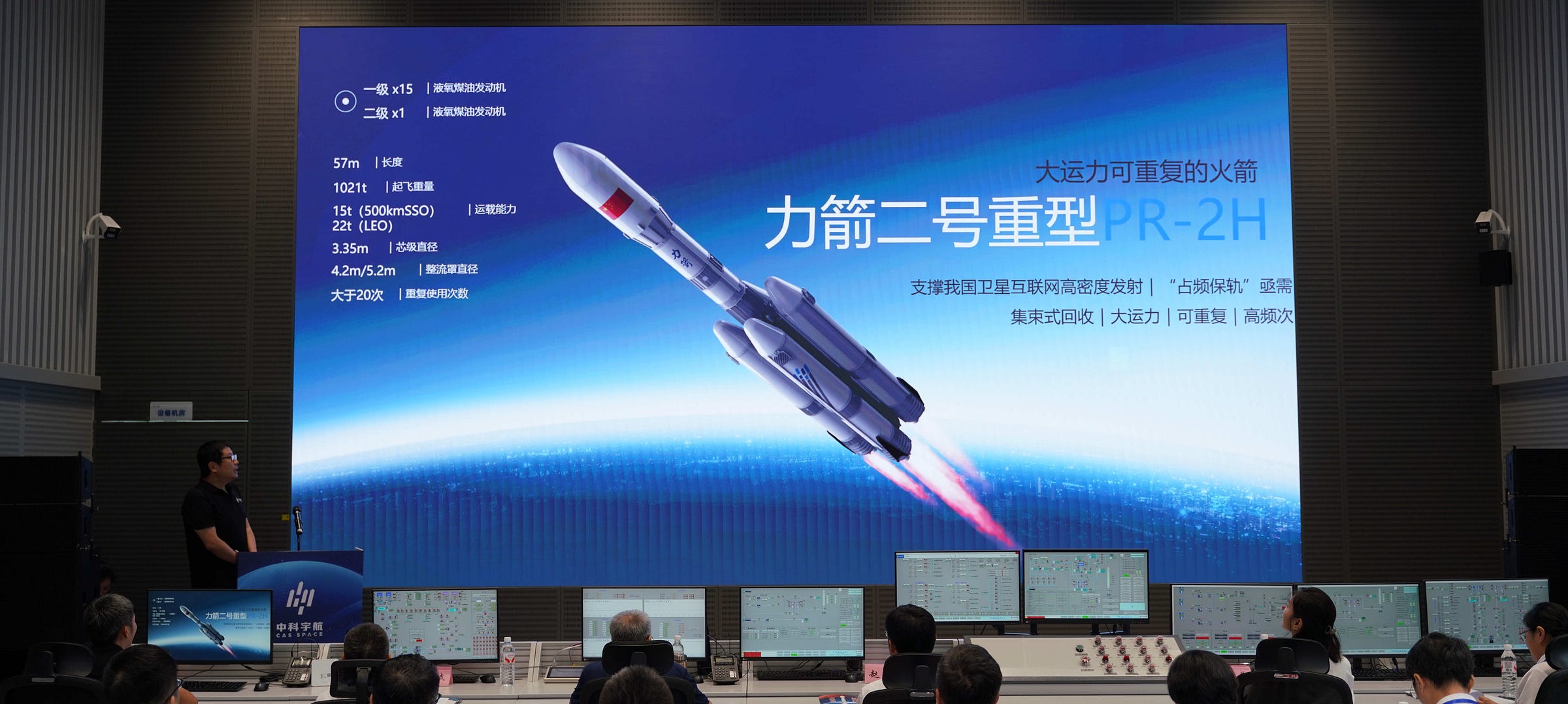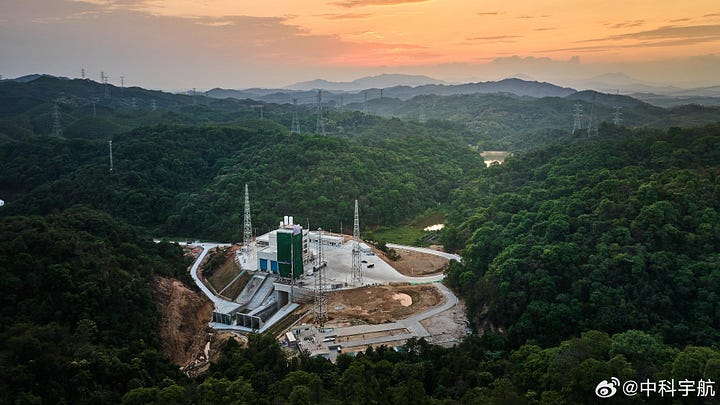CAS Space Delays Kinetica-2, Eyes IPO
It will be a little longer before the tri-core rocket flies.
This article discusses a potential initial public offering and a select stock. I am not a financial advisor, and this article is not investment advice; consult a financial advisor before investing.

Weeks out from its debut flight, Kinetica-2’s schedule has slipped while an initial public offering is eyed.
CAS Space shared on September 9th that its engine test facility in Conghua (从化区), Guangzhou (广州市), Guangdong (广东) province, within the Greater Bay Area1, has been formally opened. The facility features a 400-ton stand for testing rocket stages as well as a 200-ton and 30-ton engine test stands for the first-of-its-kind site in southern China, with hopes of hosting international clients.
It was mentioned that, alongside its hardware testing duties, the test site will host science popularization and educational events, with halls and viewing areas dedicated to that, to encourage space as a viable career path for students in the region.
CAS Space’s new facility is also, due to its location, part of a plan to promote Guangdong province as a hub for commercial space. Detailed in a provincial document, released August 19th and titled “Several Policy Measures for Promoting High-Quality Development of Commercial Space in Guangdong Province” (2025-2028)” (广东省推动商业航天高质量发展若干政策措施(2025—2028年)), areas for promotion are satellite constellations and necassary ground systems, first-of-their-kind application pilots, industry supporting ecosystem and clusters, full industry supply-chain integrations, as well as general incentives for enterprises.


Alongside opening up the facility, a short update on the tri-core two-stage Kinetica-22 was provided, with CAS Space stating:
“Preparations for the maiden flight of the Kinetica-2 carrier rocket are progressing steadily. The overall assembly of the rocket has been completed, and it has now entered the comprehensive testing phase. It is scheduled to launch the initial prototype of the Qingzhou cargo spacecraft for the national manned space program’s space station in the fourth quarter of this year.”
It was previously known that the first Kinetica-2 launch vehicle had been completed and was under testing. But, the debut launch in the fourth quarter (October, November, and December) could be a few weeks or a multi-month delay from last year’s target of September. In prior progress towards the debut flight, one of Kinetica-2’s first-stage cores was fired up in early June, followed by its second stage later in the month, at the Guangdong test facility.
While sharing the delay of Kinetica-2, CAS Space reaffirmed its plans to develop a five-core version of the rocket3 to send heavy payloads into orbit, while noting that the elusive Kinetica-3 is now set to be fully reusable (earlier designated Kinetica-4, and not to be confused with a sub-orbital tourist vehicle). At the same time, the company mentioned it is aiming to fly up to sixty times per year through its Kinetica launch vehicle series.
In the weeks before formally opening the facility, CAS Space began the process of an initial public offering to be listed on one of China’s stock exchanges, following a recent move by LandSpace. According to relevant filings, it was disclosed that the company is valued at over 11.1 billion Yuan (approximately 1.56 billion United States Dollars, on September 11th), while having a revenue of 243 million (34.1 million Dollars) and operating expenses of 752 million (105.64 million Dollars) in 2024.
The Guangdong–Hong Kong–Macao Greater Bay Area, sometimes referred to as the Pearl River Delta, is an integrated economic area with a population of 86 million people and an economy of about two trillion United States Dollars, made up of nine cities and two Special Administrative Regions (Hong Kong and Macao).
Kinetica-2 will initially be an expendable two-stage launch vehicle sending up to 12,000 kilograms into low Earth orbit or 8,000 kilograms to sun-synchronous orbit. First-stage reuse is currently planned to be implemented in 2028.
Dubbed Kinetica-2H, it is said to carry 22,000 kilograms to low Earth orbit or 15,000 kilograms into a sun-synchronous orbit. Reuse is also planned for the rocket.


